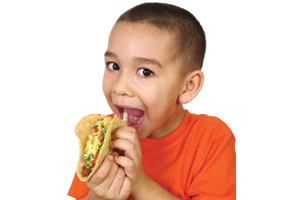 There are 52 million Hispanics in the U.S., representing 16.7% of the total U.S. population. That many people are certainly having an impact on the food industry, and there’s no question that Latinos are quickly changing America’s palate.
There are 52 million Hispanics in the U.S., representing 16.7% of the total U.S. population. That many people are certainly having an impact on the food industry, and there’s no question that Latinos are quickly changing America’s palate.There’s no magic bullet, though, that can be used to meet the needs of the Hispanic consumer. It takes cultural competence, delicious products and good, old-fashioned marketing skills to please this crowd. Here are my top 10 recommendations for growing your brand and presence in the Hispanic market:
1. Be aware that respect in the Hispanic community is based on age, gender, social position and economic status.
2. Offering packaging and promotional materials in Spanish to show respect for the Hispanic culture. Your messages must be acculturated and relevant to the Hispanic consumer, so embrace their culture, likes and dislikes.
3. Gaining your audience’s trust is a must to build confidence, which results in repeated business. Hispanics are very “brand loyal.” A 2011 NorthStar survey found that 61% of Hispanics polled said that once they find a brand they like, they don’t easily switch to another brand. Let’s remember that 89% of all first-time purchases are based on trial, not price or coupons.
4. Developing delicious products is a priority. According to The NPD Group’s 2012 report, “It’s Mealtime with U.S. Hispanics,” 46% of Spanish-language dominant Hispanics feel that almost everything that’s supposed to be good for you doesn’t necessarily taste good. The same goes for acculturated Hispanics—31% of bilingual Hispanics and 11% of English-language-dominant Hispanic agree that taste is king.
5. The Hispanic diet is influenced by the core elements of their country of origin. Core elements of traditional Hispanic diets revolve around grains, beans, fresh fruit and vegetables, so offer products that are relevant to Hispanics’ country of origin.
6. Keeping health in mind is important. Hispanics worry about their and their family’s health, and a life-threatening illness can affect their ability to provide for their family. Consequently, they are very focused on wellness and prevention versus conventional treatment of an illness. And remember acculturation: The longer people are in the U.S, the more unhealthy dietary habits they generally adopt.
7. Recognize that females—mothers, grandmothers, aunts and others—can be the head of the household. They usually make cooking and shopping decisions based on the well-being of the family, cook mostly from scratch and try to please their children and significant others at any cost.
8. Know that Hispanics rely on Spanish-language media. According to a NorthStar report, 82% of Latinos watch Spanish TV, 75% listen to Spanish radio and 42% read Spanish papers or magazines. Social media is increasingly being used by Latinos, too.
9. Be aware Hispanic families spend more time doing activities together than other ethnic groups.
10. Keep in mind that Hispanics households are larger than many other households.
Taking all of these factors under consideration will help bakers and other food manufacturers become more involved in the Latino/Hispanic food market and engaged with Hispanic consumers.
Sylvia Klinger, MS, RD, is a food and Culinary Consultant and founder of Hispanic Food Communications in Hinsdale, Ill.



